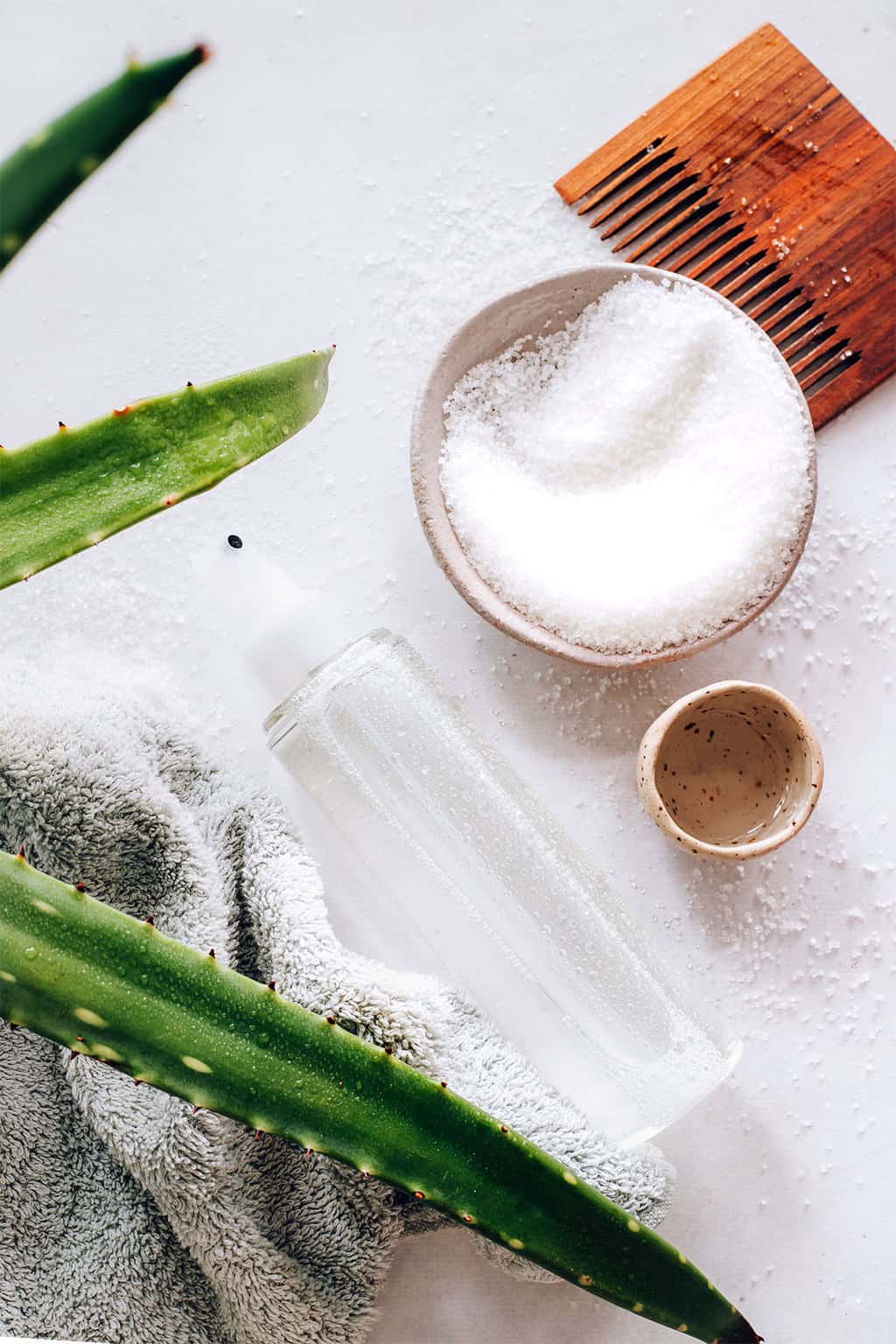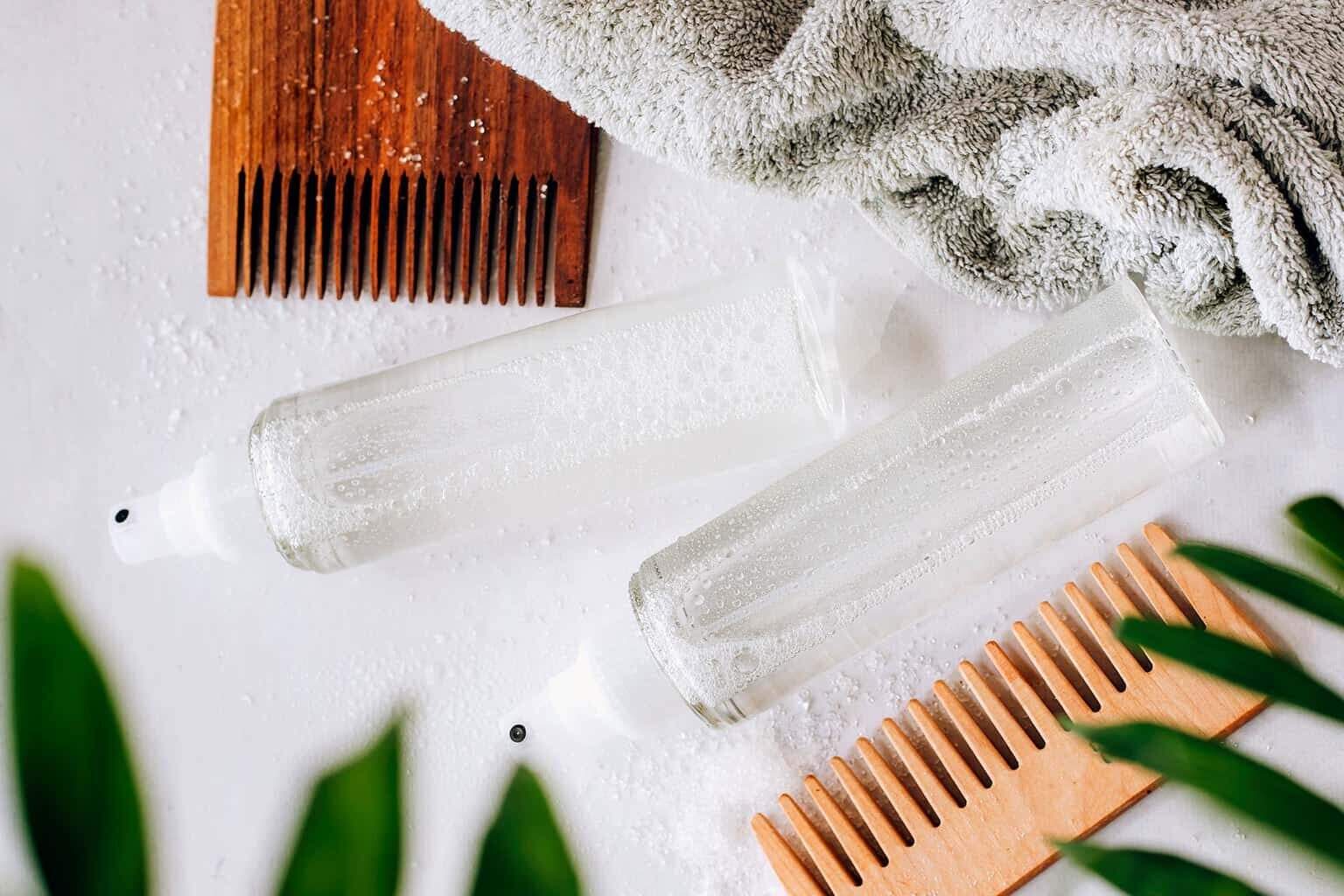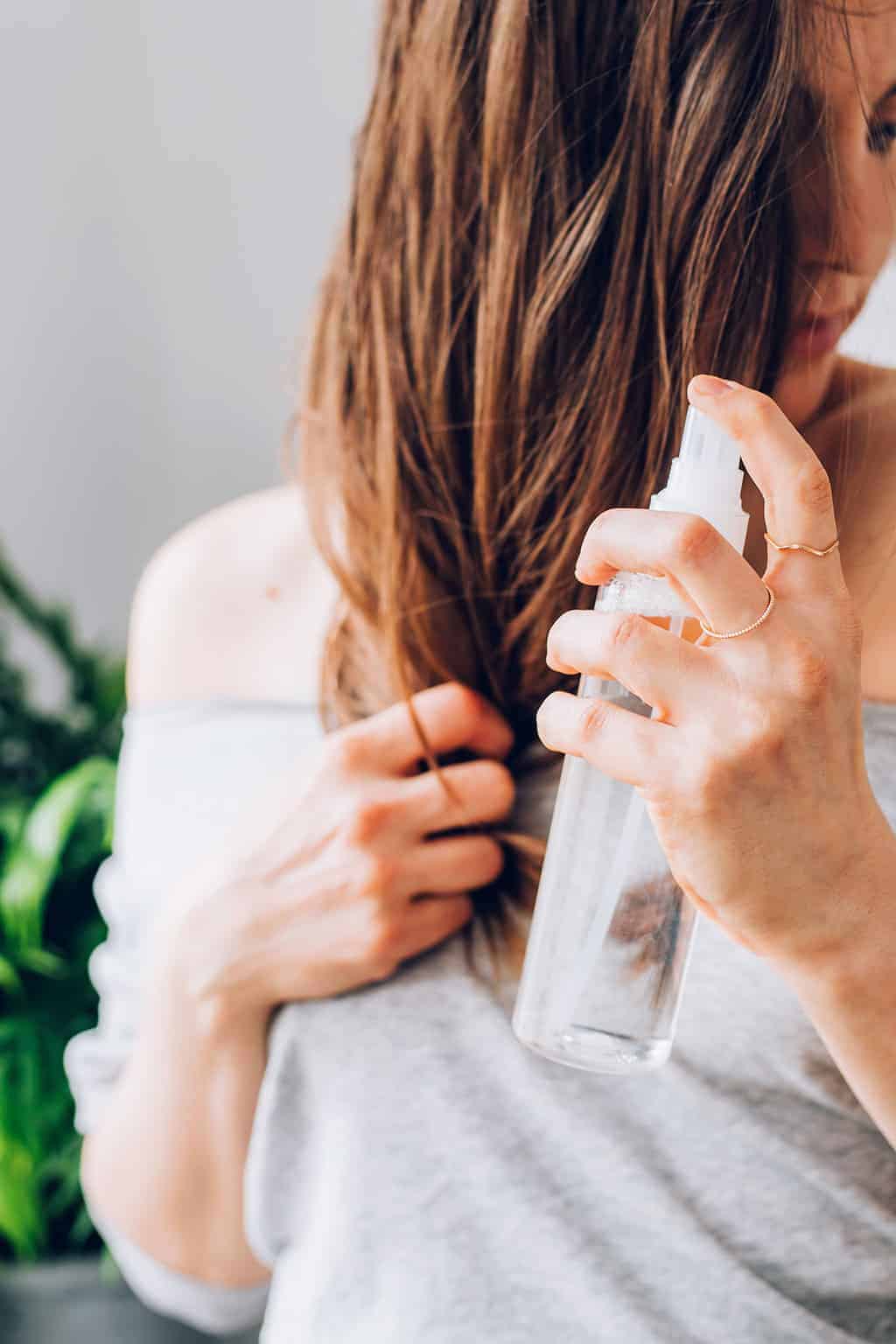Table of Contents
In my search for alternatives to help me achieve my best beachy hair, I realized that I could not only easily make a DIY version of my favorite salt spray at home, but that I probably should have been using sugar spray instead all along. But let’s go back to the start…

I don’t know about you, but I don’t have good beach hair. The entire “beach hair don’t care” premise is lost on me.
Something about my particular hair texture — not entirely straight nor curly, doesn’t respond well to air drying naturally — never allows me to have good hair when I’m actually at the beach. My beach hair leaves me caring very much about the fact that I look more like Medusa and less like a mermaid.
However, I’ve found that sea salt sprays get me much closer to the wavy, carefree surfer hair of my dreams, aka the best beachy hair. What I didn’t realize was how much damage and havoc my favorite drugstore version wreaked on my locks, damaging my ends and drying out my hair, which already isn’t fairing well thanks to all of the chlorine and sun this time of year – hence my willingness to try a sugar spray.
Jump to:
Sea Salt Spray vs. Sugar Spray
As you may know, salt spray is great for adding a bit of bend to your hair. You won’t get perfect curls, but you’ll find that sea salt spray encourages wavy movement, more texture and a gritty grip.
This is the key to those aforementioned surfer vibes. The issue with most salt sprays is definitely the grip aspect. While you can layer spritzes to create the desired volume and movement, there’s a fine line between beachy and crunchy.
Not to mention, sea salt spray can leave your hair dehydrated — and there’s nothing California cool about dry, crispy locks or damaged hair. If your hair is damaged from dyeing (like mine) or has a tendency to be dry or brittle, sugar spray will be a better option.
Sugar spray is basically salt spray’s laid back sister. Both provide grip, but you’ll find more softness with sugar spray. Unlike sea salt spray, sugar spray creates grip and sheen.
It’s a great option when you want to add polish and softness. It’s also especially good at taming fly aways and smoothing out broken or baby hairs when you pull your hair back into a bun or ponytail.
Think of sugar spray as light hold hairspray and of salt spray as mega hold. While you won’t get the serious grip with sugar spray that you do with sea salt, you also won’t be pulling moisture out of your hair like you would with the salt spray.


That being said, sometimes you just need a more dramatic wave. If your hair is healthy and tends toward being stick straight, glossy and smooth (lucky you!), you’ll want to turn to sea salt spray to get the beachy texture you’re after.
As with all things, you’ll want to use sea salt spray with moderation. Limit use to no more than a few times a week and be sure to thoroughly shampoo and condition tresses in between usage.
The good news is this: No matter which one you pick, we have the recipes for easy DIY sprays you can make at home. Because many of the salt and sugar spray options you find in stores contain alcohol, you can rest assured that neither of these options will be as drying or quick to fade hair color as store-bought versions.
Plus both are incredibly easy to use. Simply spray on dry or damp hair and scrunch to create bend.
For sea salt spray, you’ll need:
For sugar spray, you’ll need:
The process for making each spray is the same: You’ll mix respective ingredients into a spray bottle and shake to combine. Spray on dry or towel-dried hair and scrunch strands to create movement.


FAQ
Sea salt spray adds more texture and grip, great for creating dramatic beachy waves, but it can dry out your hair. Sugar spray gives a softer hold with added shine and is more hydrating, making it better for dry or damaged hair.
It’s not recommended. Sea salt spray can dry out your hair, so limit use to a few times a week and follow up with good conditioning.
Yes. Sugar spray is less drying and helps retain moisture, making it gentler on damaged or dyed hair.
Sugar spray gives light hold and adds polish, but it won’t give strong grip like a gel or traditional hairspray.
How to Make Sea Salt Spray and Sugar Spray
When it comes to getting your best beachy hair, it’s possible that your go-to sea salt spray might be doing more harm than good.
Yield: 8 ounces
Cost: $3
Notes
And definitely don’t use these sprays with heat styling tools such as flat irons or curling irons as ingredients might burn.
Photos by Ana Stanciu


